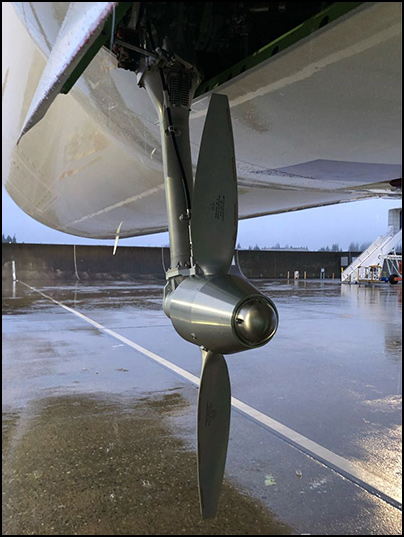Online Commentator Changes Opinion on India Air Crash

By Arturo Castañares
Editor-at-Large
An experienced commercial airplane captain who suggested the India Air crash this week was caused by a simple mistake by the pilots has now changed his opinion on the cause of the deadly accident.
The Boeing 787 Dreamliner, operating as Air India Flight 171, departed Ahmedabad Airport in India on route to Gatwick Airport in London on Thursday with 242 persons on board, including passengers and crew.
The airplane crashed into a medical university housing building just 33 seconds after taking off, killing all aboard except one passenger who walked away from the wreckage. 29 people on the ground were also killed.
This was the first fatal crash of a Boeing 787 airplane since the model’s commercial launch in 2011. To date, 1,189 units have been built at the company’s Seattle, Washington plant.
The online contributor, who calls himself "Captain Steeeve" in Youtube videos, creates content related to airplane crashes and incidents of interest. He presents himself as a former Air Force pilot and current commercial airline Captain, although he does not identify any particular company. His Youtube profile currently has over 600,000 subscribers.

Captain Steeeve
Captain Steeeve reviewed videos of the doomed flight and argued that the fact the airplane’s landing gear remained down and the trajectory of the flight path suggested the wing flaps may have been mistakenly retracted shortly after takeoff instead of raising the landing gear, causing a loss of lift that led to the crash.
Flaps are movable areas the wings which are extended by the pilots during takeoff and landing to increase the area of the wing, as well as its shape, to maximize aerodynamic lift at low flight speeds.
Videos of the accident show the airplane initiated a normal climb from the runway for the first few seconds of the flight, lending credence to the conclusion that the flaps were properly set for takeoff.
But days later, as additional videos surfaced of the airplane before the crash, Captain Steeeve uploaded a new video reflecting a more plausible conclusion; that the airplane experienced a rare dual engine failure shortly after takeoff.
A distress radio call from the airplane heard moments before impact included short comments saying "Thrust not achieved..falling...Mayday, Mayday, Mayday!" It was not clear which pilot made the radio call.
In the new videos, the airplanes Ram Air Turbine (RAT) can be seen deployed from the right side of the fuselage. The RAT is a small propeller that deploys when an airplane experiences electrical or hydraulic system failures and spins in the air to create enough energy to maintain critical control systems. The RAT would be deployed if both engines went out.

A Boeing 787 Ram Air Turbine (RAT)
As the accident airplane passes the camera in the new video, the sound of the small propellor can be heard which is distinct from the sound of a jet turbine.
Captain Steeeve compared the video to one of another airplane that flys by with a deployed RAT. The sounds are nearly identical.
Given the new information, Captain Steeeve now suggests that the most likely explanation is that the airplane experienced a loss of both engines on takeoff, an extremely rare event among commercial airliners that has only happened once before in the US; the US Airways flight that landed in New York's Hudson River in 2009 after a flock of large birds damaged both engines when the airplane was only 2,800 feet in the air.
The India Air flight only reached an estimated 650 feet in altitude before descending and crashing.
All twin-engine airplanes are certified to fly with one nonfunctional engine, but none can continue to fly without both engines.
Multi-engine airplanes have separate and redundant systems to ensure engines operate independently but contaminated fuel, birds or debris ingested by the engines, or computer malfunctions could cause both engines to fail at the same time.
The airplane’s flight data (FDR) and cockpit voice (CVR) recorders were recovered but is not clear if they were undamaged. The FDR, known as a black box, would show all of the airplane’s settings during the flight, including flap settings, engine performance, and pilot inputs.
The CVR records the pilots’ communications between them, as well as radio calls to air traffic controllers. The recording would reveal whether the pilots executed proper pre-flight checklist, and what they may have said to each other in the moments before the crash.
Boeing has agreed to cooperate with Indian and British aviation authorities investigating the crash. Final accident reports are usually released up to two years later.
Castañares is the Publisher and Editor-at-Large of La Prensa San Diego. He has received several journalism awards, including the Ruben Salazar Award for Excellence in Print Journalism, the San Diego County Taxpayers' Association Media Watchdog award, and several First Place awards from the San Diego Pro Chapter of the Society of Professional Journalists. Castañares is also an FAA-licensed private pilot and reports on airplane accidents and aviation issues.
He can be reached directly at art@laprensasd.com.





